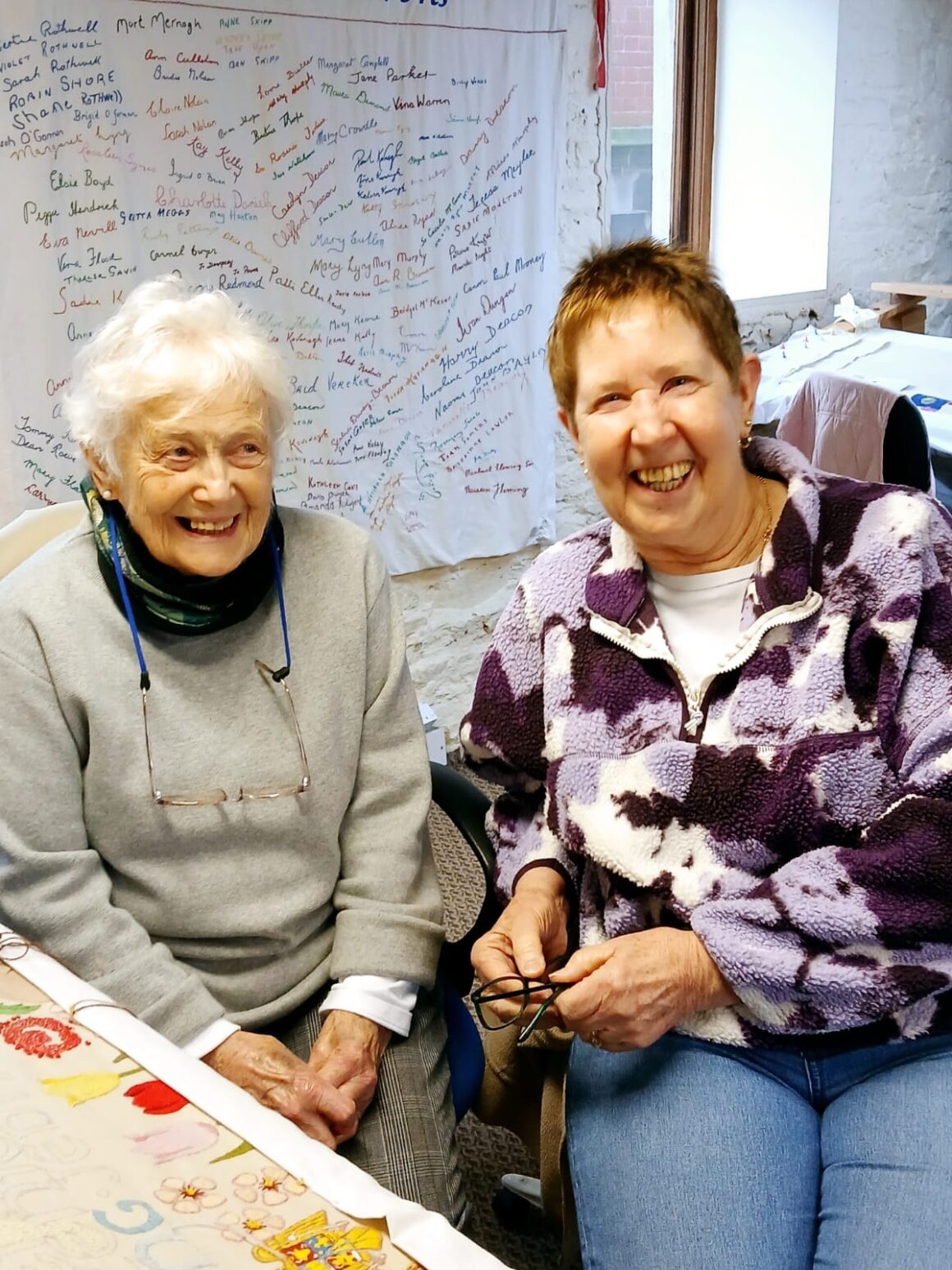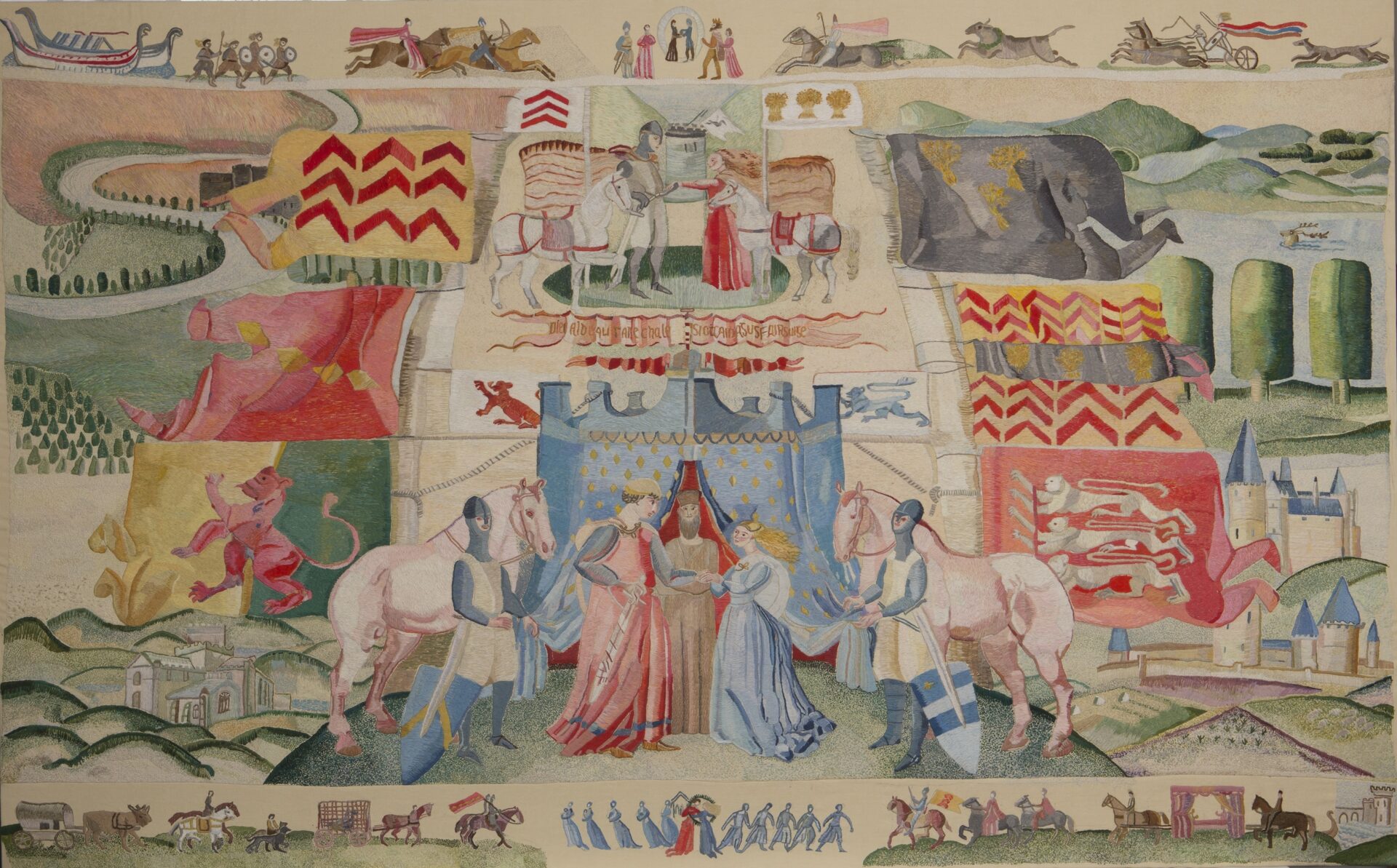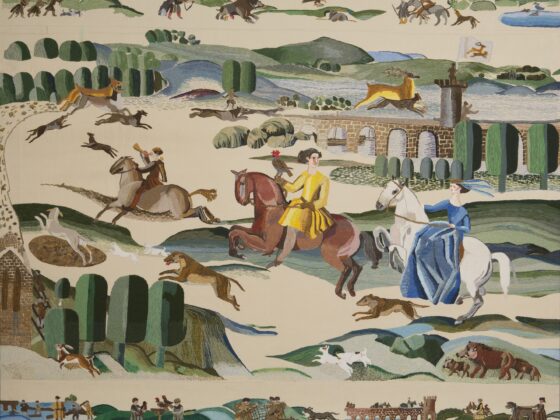THOMAS POOL INTERVIEWS STITCHER ROSA RONAN ABOUT THE ROS TAPESTRY – A MONUMENTAL PROJECT 27 YEARS IN THE MAKING CHRONICLING THE MEDIEVAL HISTORY OF NEW ROSS AND THE SOUTHEAST OF IRELAND.
Thomas Pool: What can you tell us about your background? What drew you to the Ros Tapestry project?
Rosa Ronan: I’m from New Ross, my family has been here for nine generations. I went to school in Holy Faith Convent, then after that I trained in hotel management for two years. Then I went to Wexford, then Germany, then to Cork for a year, and then I did three years at the Shelbourne Hotel in Dublin. My mother got sick, and I had to come home to New Ross, to help her run her café. Then I met John Ronan, we married in 1965, and have two sons: David and Sean.
I wasn’t really interested in stitching, but when Reverend Paul Mooney of Saint Mary’s in New Ross saw the Bayeux Tapestries, he was inspired to create the Ros Tapestry project. Together with the local artist Ann Bernstorff and her daughter Alexis, they began the project in 1998. The Ros Tapestry is significantly different from the Bayeux, which inspired it, it’s been a massive community effort, with great comradery, and helping one another.
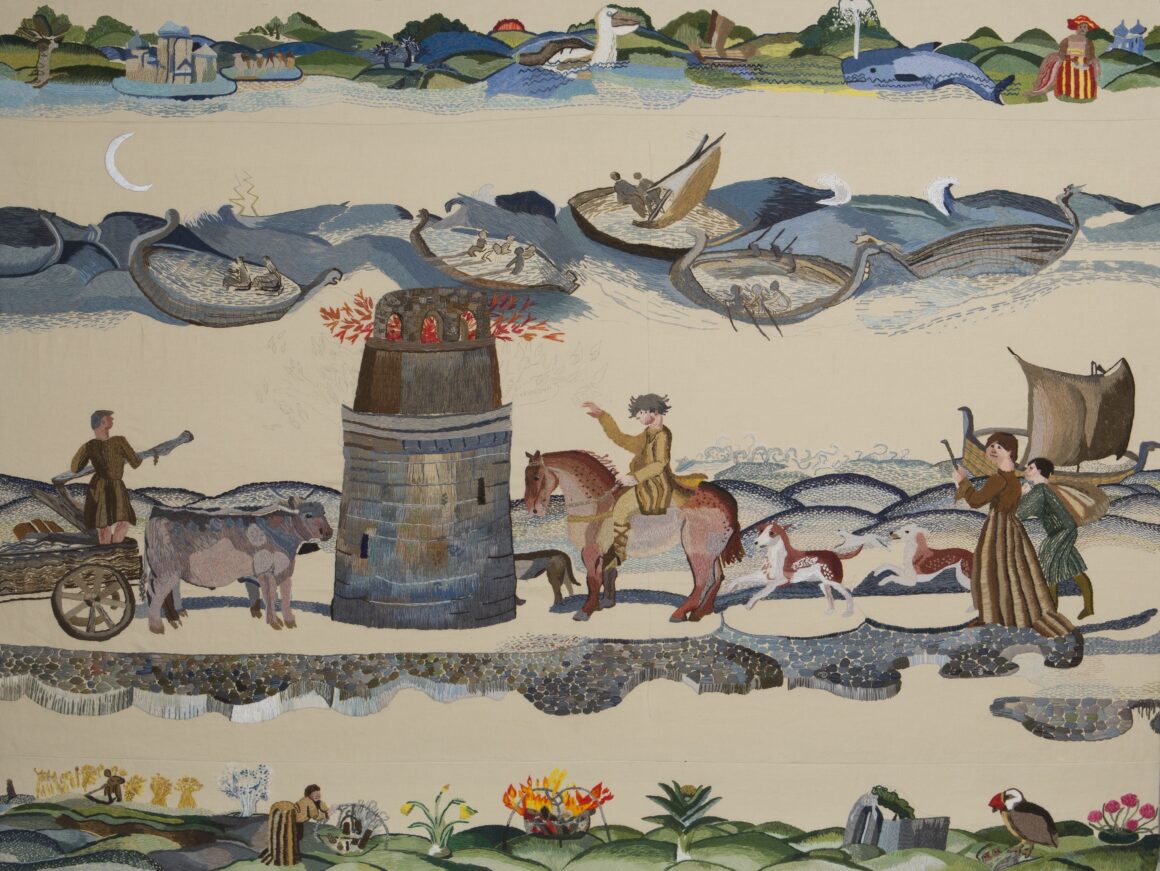
I ran into Alexis Bernstorff one day on the street, and she asked me if I would join the project, and I said, ‘yeah that sounds good.’ So for the next year, I learned to stitch. Ann Bernstorff put in a tremendous amount of work designing the art for the panels, she looked at what they wore back then, what they ate, what animals they had, everything about what life was like in medieval Ireland.
From the whole of 1998 to 2025, we had over 180 volunteers. Originally it was myself and 15 other women, but we have new people coming in to learn and participate.
We call what we do ‘painting with thread’, it’s crewel embroidery, but you have to constantly move with the design and the flow of the stitching. From when I first started I just fell in love with it, and I’ll do it to the end.
We’re doing two new tapestries now, about New Ross’s relationship with America and Europe called Threads of Friendship, which will keep us going for another good while.
TP: Can you describe your specialist involvement in the Ros Tapestry project to date? Where did you first learn these craft skills?
RR: We all have the skills we need for the project, but sometimes there are better stitchers than others, and you have to keep an eye on those who are enthusiastic but not as good because they don’t follow the artwork sometimes, and they’ll have to rip it and start over again. So I help watch over them.
I did patchwork for years, and did all sorts of things, but I can’t paint or draw. The only artistic thing I’ve done is the tapestry.

TP: The intricate and delicate needlework, required for such an ambitious project, is very labour intensive. How do you and your fellow stitchers tackle such a large-scale, durational project?
RR: I’ve been involved since nearly the beginning of the project, and we’ve fallen into the rhythm of it. We mostly work Tuesdays, some women come in for just a few hours, but I’m there all day. It’s very intricate work, and most of us have been there so long that we just know reflexively how to do it. It really is like painting with thread, and we just let the artwork guide us.
TP: New Ross has recently seen renewed focus as the setting for Claire Keegan’s novel, Small Things Like These (Grove Press, 2021), and the film adaptation of the same name, starring Cillian Murphy. How do you view the Ros Tapestry within local and national history?
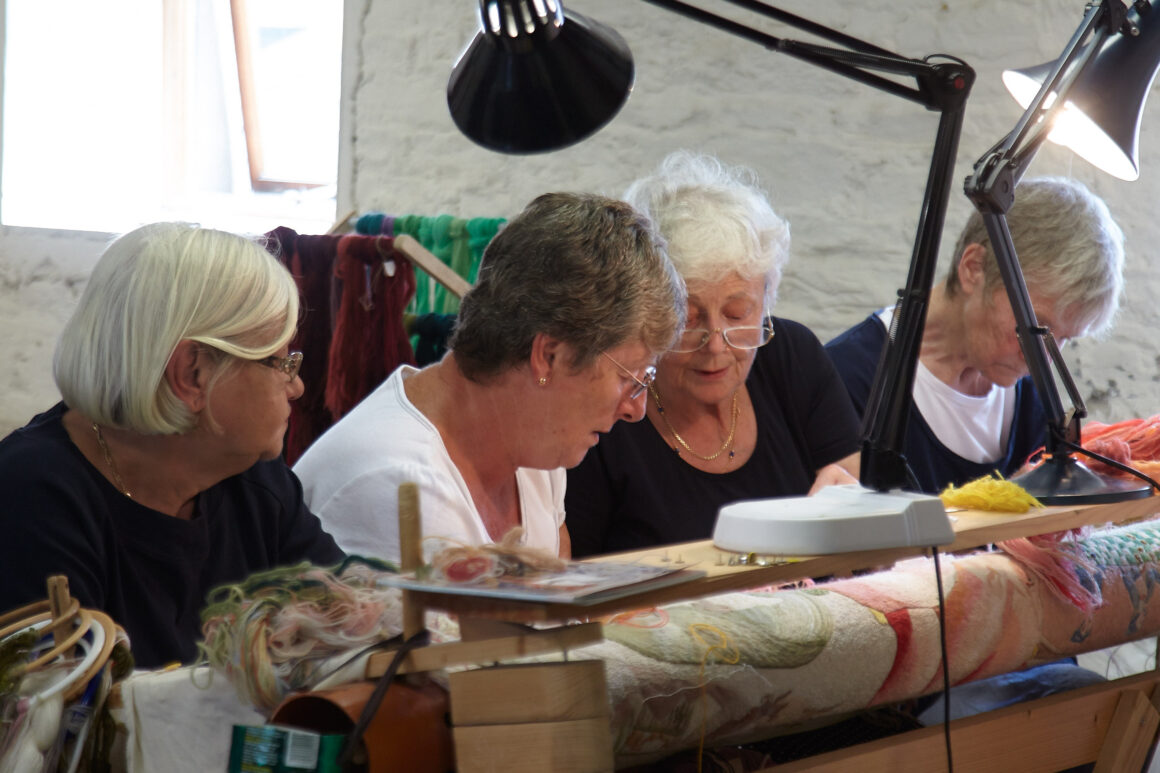
RR: It’s such a tremendous project, I hope it’ll be seen as better than the Bayeux Tapestry, we had people from Bayeux came over, and they were gobsmacked!
When we started learning how to create the tapestry, we had to recreate the paintings Ann Bernstorff made, using a lightbox and acetate paper, then we rolled it very tightly onto a loom. We had to learn eight stitches, and eventually just by looking we know what type of stitches were needed where.
So it’s been a tremendous amount of work, and I think that The Ros Tapestry is very, very important for the town. Thousands of people went to see it last year in Kilkenny Castle, where it was on display. We’re hoping to move it into the new Norman Centre that’s set to open in New Ross in 2027.
TP: The medieval inspiration for the tapestry is clear, with its style, design, and materials emulating artifacts like the Bayeux Tapestry. Do you feel that this medieval style limits the creativity of the stitchers? Or does it help to tell the story of New Ross and Wexford, where a more modern style may not?
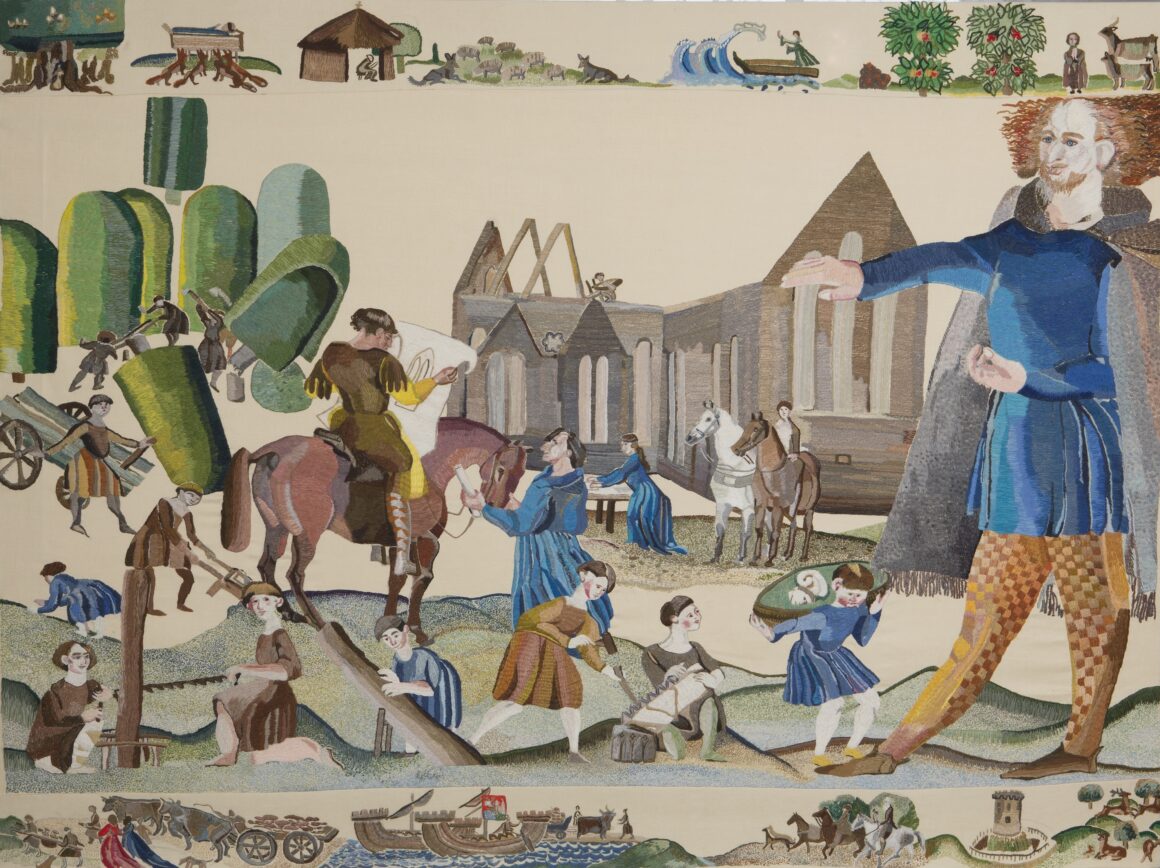
RR: I think the style is very important for the story, and Ann Bernstorff’s interpretation of the style is absolutely beautiful.
I enjoy working in that style. If I’m out in the woods now, and I see a nice fern or something, I’ll want to try and stitch it. It drives me mental sometimes! I’ll just try and do too much.
It bleeds into my every day, and it’s a technique I’ll never lose now.
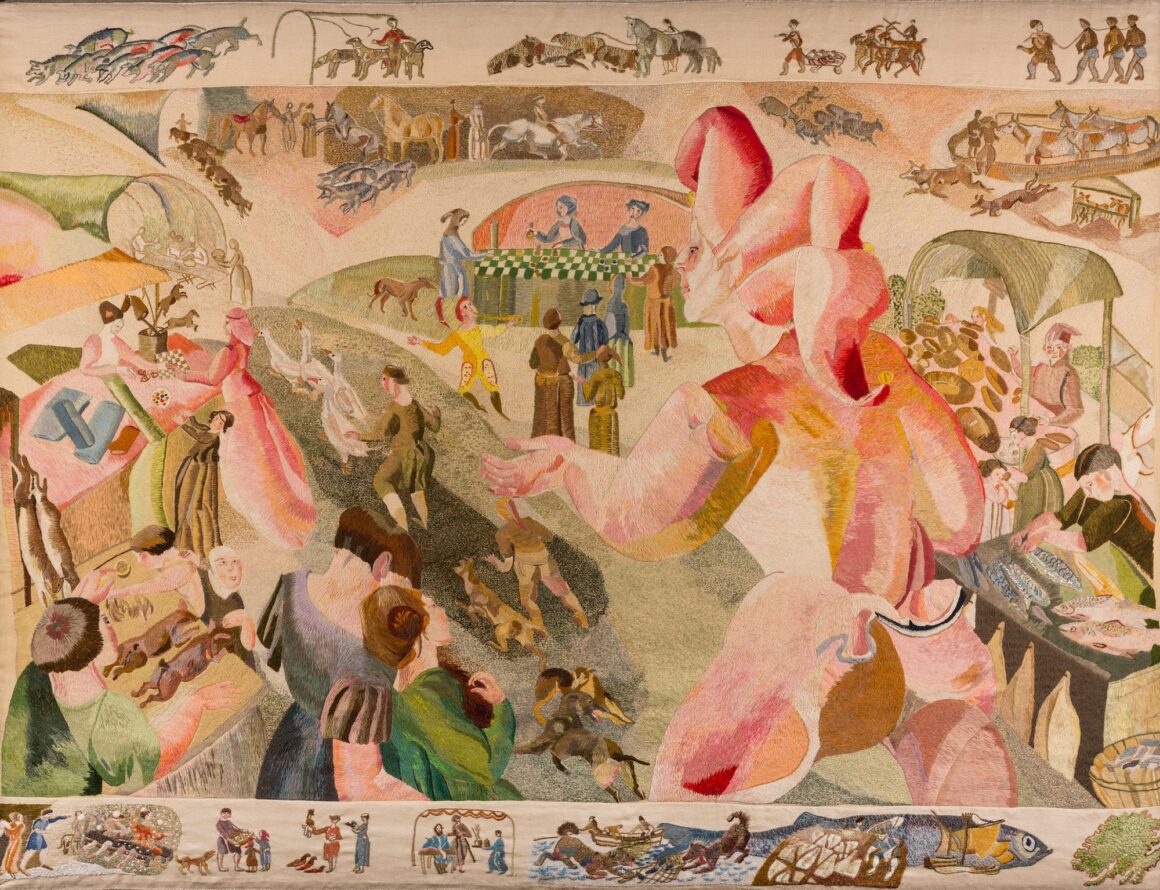
TP: Stitchers have been working constantly since the early 1998 to complete the Ros Tapestry. With 14 of the 15 panels of the tapestry now completed, how do you hope the public will interact with the Tapestry?
RR: I think they will appreciate it, they’ll have to, just because of the incredible work that’s been put into it. I think people need to come in and see it, there are people in New Ross who still say to me ‘I never knew that was there,’ so we need more people to come in and see it.
My husband John was one of the only male stitchers to work on it, and he worked with me on it for ten years, he did the Walls of Ross section while I worked on the Irish and Normans at the fair. That panel is called Exchange, and it is very special to me.
Rosa Ronan is a volunteer stitcher for the Ros Tapestry project.
